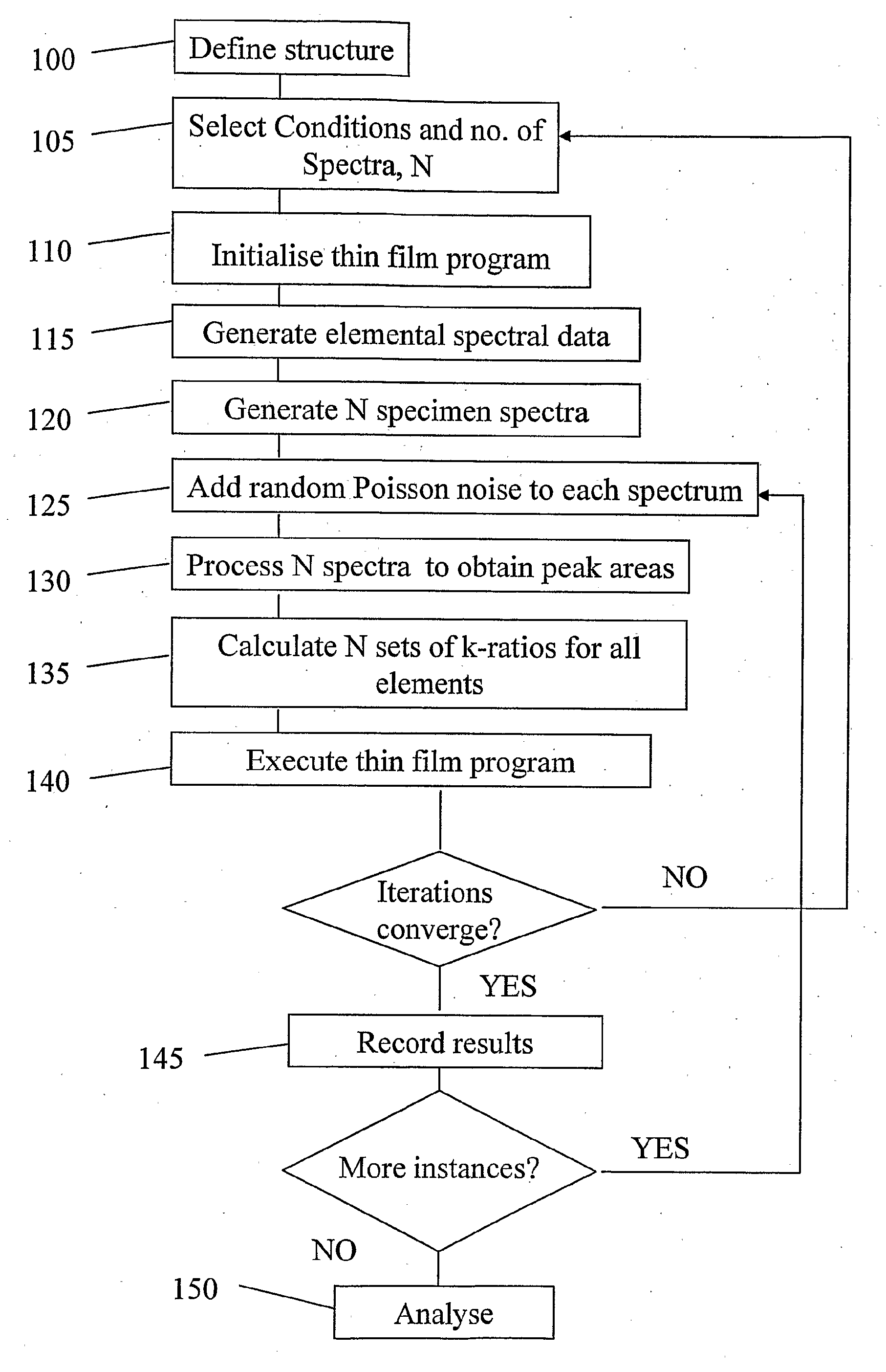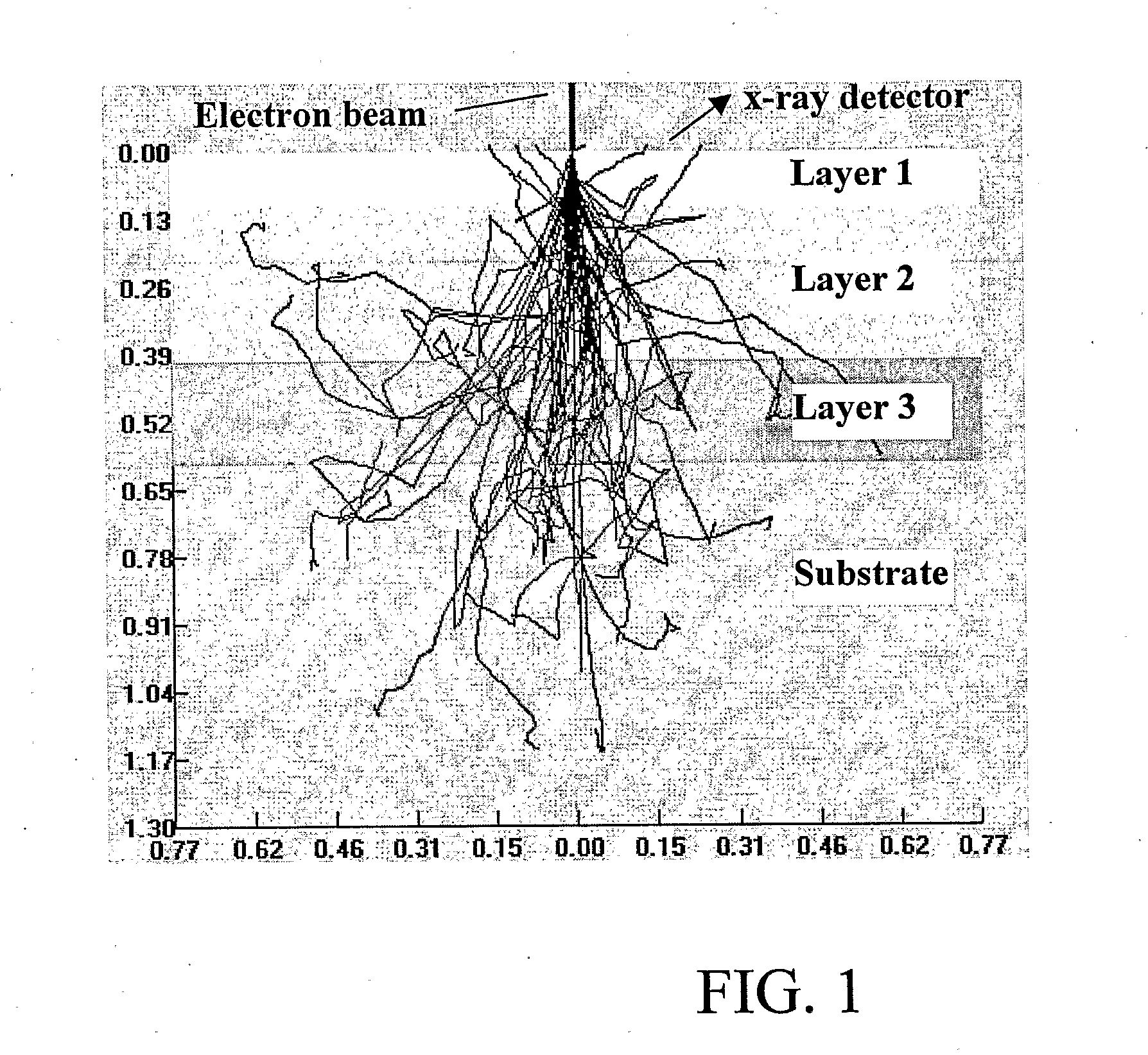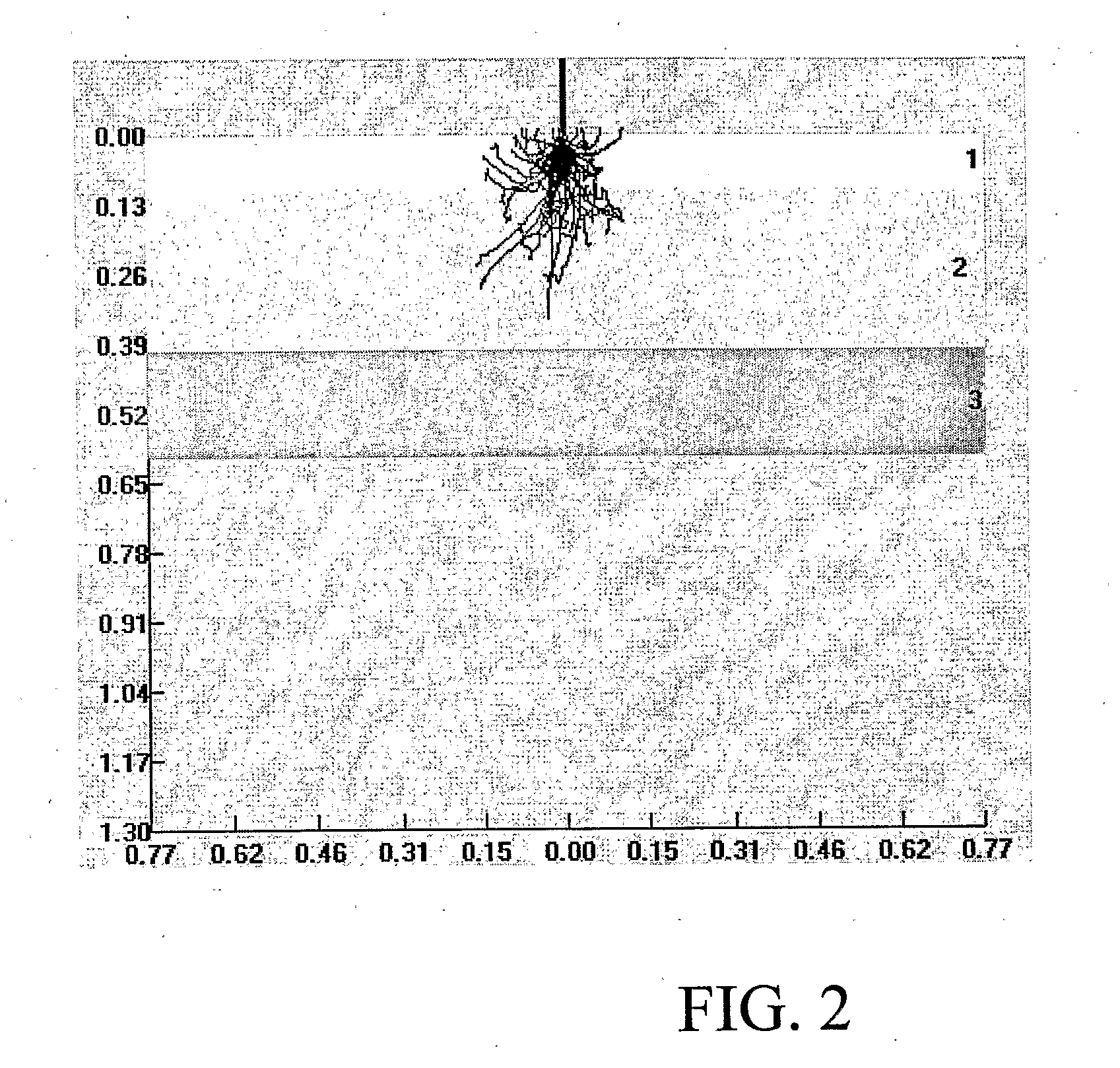Method of determining the feasibility of a proposed structure analysis process
a structure analysis and feasibility technology, applied in the field of automatic optimization of a proposed structure analysis process, can solve the problems of not providing any recommendations for analysis, difficult and inability to find the best-fit set of thicknesses and compositions
- Summary
- Abstract
- Description
- Claims
- Application Information
AI Technical Summary
Benefits of technology
Problems solved by technology
Method used
Image
Examples
Embodiment Construction
[0055]A general overview is firstly provided according to one embodiment in terms of how the invention can advantageously provide a simulated experimental environment for exploring the capabilities of thin film software to solve a particular analysis problem. A software model is used to generate x-ray spectral data for a proposed sample and the data are analysed by “thin film analysis” software in order to determine whether the software is capable of deducing the structure of the sample by fitting certain “unknown” parameters.
[0056]Firstly a proposed sample is defined, this having the multi-layered structure in the form of a thin film deposited upon a substrate. The specification for the sample is provided in terms of the approximate elemental composition, namely a composition typical of the sample to be analysed. This will in general be approximately the same as one of the unknowns that may be eventually analysed for real. The proposed sample is also defined in terms of the substra...
PUM
 Login to View More
Login to View More Abstract
Description
Claims
Application Information
 Login to View More
Login to View More - R&D
- Intellectual Property
- Life Sciences
- Materials
- Tech Scout
- Unparalleled Data Quality
- Higher Quality Content
- 60% Fewer Hallucinations
Browse by: Latest US Patents, China's latest patents, Technical Efficacy Thesaurus, Application Domain, Technology Topic, Popular Technical Reports.
© 2025 PatSnap. All rights reserved.Legal|Privacy policy|Modern Slavery Act Transparency Statement|Sitemap|About US| Contact US: help@patsnap.com



